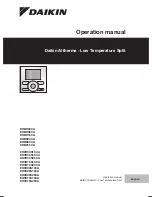
Other Control Functions
2/03
10260A Series Actuators – Installation, Operations, and Maintenance
47
6. Other Control Functions
6.1 Split Range
WARNING
While the unit is powered, a potentially lethal shock hazard exists inside the case.
Procedure for Actuator to Operate from 4 to 12 mA
To set span of printed circuit board to 8 mA:
•
Set input to 0 mA and adjust Zero pot on printed circuit board to 0 % on actuator scale.
•
Set input to 8 mA and adjust Span pot on printed circuit board to 100 % on actuator scale.
To set actuator to operate at 4 to 12 mA:
•
Set input to 4 mA and adjust Zero pot on printed circuit board to 0 % on actuator scale.
•
Set input to 12 mA and verify span at 100 % on actuator scale. No adjustment should be necessary.
•
Replace Jumpers on printed circuit board.
Procedure for Actuator to Operate from 12 to 20 mA
To set span of printed circuit board to 8 mA:
•
Set input to 0 mA and adjust Zero pot on printed circuit board to 0 % on actuator scale.
•
Set input to 8 mA and adjust Span pot on printed circuit board to 100 % on actuator scale.
To set actuator to operate at 12 to 20 mA:
•
Set input to 12 mA and adjust Zero pot on printed circuit board to 0 % on actuator scale.
•
Set input to 20 mA and verify span at 100 % on actuator scale. No adjustment should be necessary.
Replace Jumpers on printed circuit board.
6.2 Master/Slave Arrangement
Introduction
With the motor positioner, the controlling signal for the actuator is a 4 to 20mA from a current output
controller.
Unlike the position output controller the current output controller must produce a continuous analog signal
or the actuator will revert to one of its failure modes. These are customer selected by movable jumper to
remain where it is, downscale, upscale or to a predetermined position (adjustable).
Signal failure is not a problem since the available failure modes allow the user to predict the actuator
position on signal loss.
















































